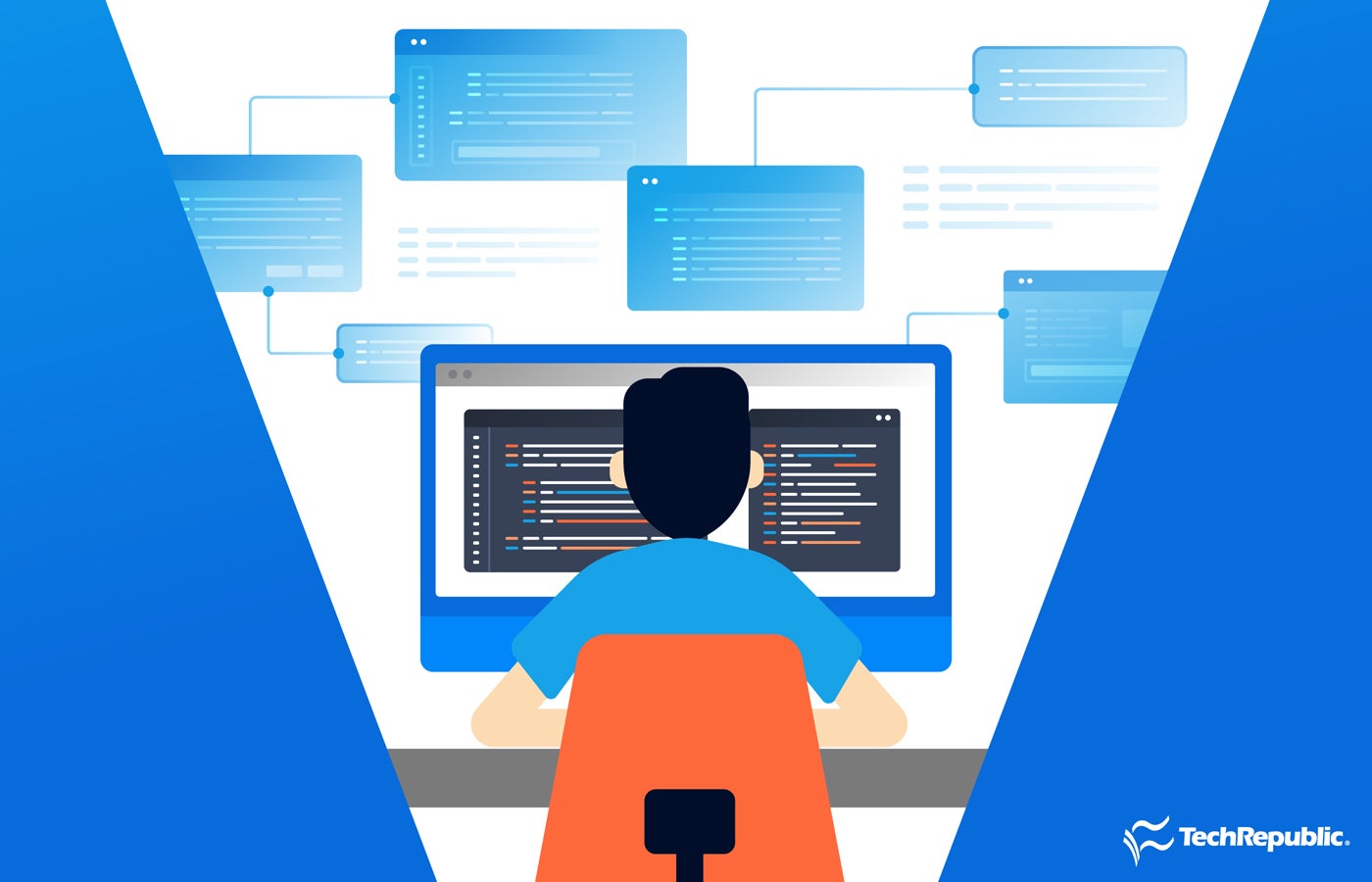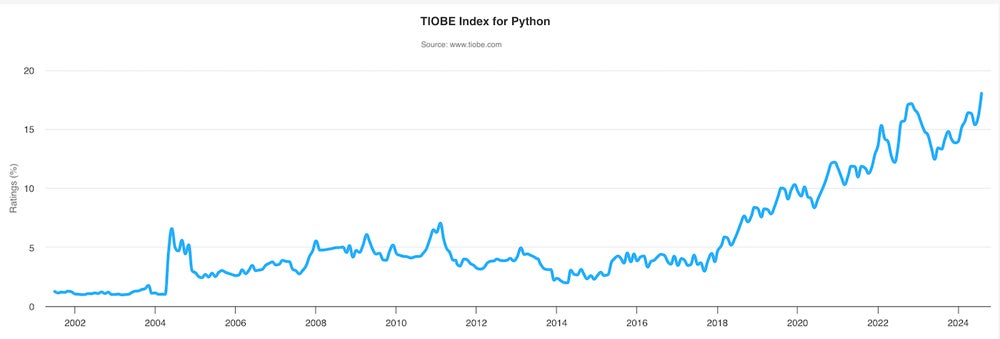
Python: The Uncontested Champion of Programming Languages
Python has officially taken center stage in the world of programming, and the latest data from the TIOBE Programming Language Community Index underscores its dominant position. As of August 2024, Python commanded 18.04% of the rankings, soaring from 16.12% in July. This remarkable leap has cemented its status as not just the most popular programming language at present, but potentially the most popular ever. In a landscape where programming languages constantly vie for attention and usage, Python’s current reign paints a vivid picture of its widespread applicability and growing necessity.
 A visual representation of Python’s ongoing rise in popularity.
A visual representation of Python’s ongoing rise in popularity.
In a year where so many industries are pivoting towards digital solutions, Python’s growth—an impressive 4.71% increase compared to last year—signals its critical role in shaping modern technology. Whether it’s web development, data analysis, artificial intelligence, or automation, Python’s versatile nature allows it to reimagine the possibilities of programming.
A Leap Ahead of the Competition
One interesting aspect of this surge is the significant gap now present between Python and its closest competitor, C++. According to Paul Jansen, CEO of TIOBE Software, Python currently holds an 8% lead over C++. While this variance may seem modest, it approaches historical highs, reminding us of Java’s supremacy over C in 2016 when it enjoyed the largest margin ever recorded. The anticipatory echoing in Jansen’s words is clear: “It is likely that it is Python’s next step to become the most popular programming language ever.”
While some might attribute Python’s popularity to its ease of learning for newcomers to programming, it is undoubtedly its broad spectrum of libraries and frameworks that attract experts in the field. From TensorFlow for machine learning to Flask for web development, the capabilities extend far beyond simplistic scripting. For anyone serious about diving into the waters of programming, mastering Python becomes a strategic move.
The Landscape Beyond Python
Interestingly, the TIOBE Index also highlights a few rising stars. Rust and Kotlin are slowly but surely climbing their way into the top ten. Rust, currently at number 14, and Kotlin, making waves at number 18 after boosting from the previous year’s position of 27, showcase the evolving demands of software development. Their ascent indicates a growing interest in concurrent and safer memory management approaches, which reflect modern programming challenges.
As a developer who has dabbled in Rust, I can vouch for its performance efficacy and the thrill of leveraging a systems language that emphasizes safety. However, it’s the unique niche Python occupies that continues to keep my attention—it’s simply more approachable for those just breaking into the industry.
 An overview of the shifting trends in programming languages.
An overview of the shifting trends in programming languages.
Disruption and Adaptation
The changes in the TIOBE Index don’t just demonstrate popularity—they illustrate disruption. SQL’s leap from 10th to 7th is a reflection of a continued demand for database management, while Fortran’s ongoing relevance, despite slipping into 10th place, highlights the persistence of legacy systems in modern computing. It’s fascinating to observe how the old world of programming continues to adapt alongside new technologies, creating a melting pot of methodologies that coexist.
I often hear discussions about the ‘best’ programming language, yet in reality, the question veers off into a subjective realm based on context and necessity. Python remains a staple for newcomers and experienced developers alike, and no matter how the winds of change blow in the tech industry, it seems likely that Python’s extraordinary journey is far from over.
Looking Forward: The Future of Python
As we navigate through this tech-savvy era, I remain optimistic about Python’s journey. What can we expect in the coming months and years? The possibilities are expansive. Python’s community continues to foster innovation while expanding its ecosystem, making it more than just a language; it’s a thriving culture of developers eager to explore everything it has to offer.
Despite fierce competition, Python’s lead suggests we might witness a sustained dominance in programming languages. Jansen’s declaration of its ‘hegemony’ resonates strongly within the developer community as more and more organizations invest in Python-driven solutions, providing a compelling case for aspiring and seasoned programmers.
Moreover, for those considering a career in technology, now is an ideal time to immerse yourself in Python. From ambushing the corporate world to forging paths in academia, understanding this language will become an invaluable asset.
 The dynamic landscape of programming languages and their communities.
The dynamic landscape of programming languages and their communities.
In conclusion, as we observe Python’s ascension on the TIOBE Index, let’s embrace the skills we can learn and cultivate through it. Programming isn’t just about learning syntax; it’s about adapting to challenges that call for creativity and resolution. Python embodies this philosophy—let’s harness it toward building a brighter technological future.
Stay tuned for more insights on the latest developments in programming languages and technology trends. Subscribe to relevant newsletters and join the conversations shaping the future of software development.















